Here are some science questions to help you test your knowledge of the Next Generation Sunshine State Standards.
The questions are chosen randomly, so this quest will be different each time you reload the page.
Back to the Grade 5 standards.
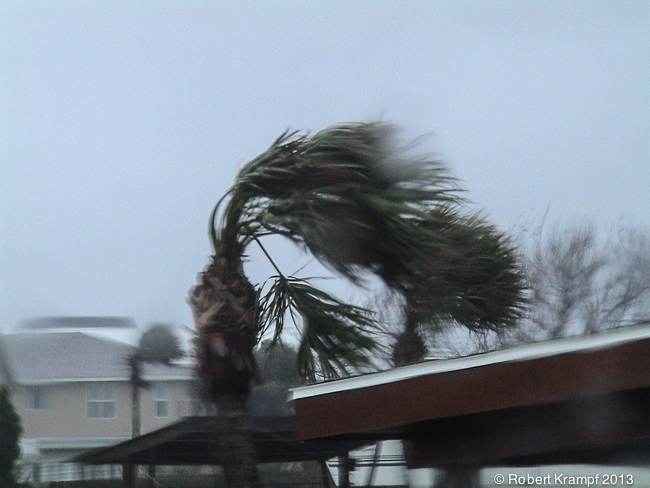
Which of the following is a major characteristic of hurricanes?
-
Low barometric pressure
Yes. Hurricanes always have very low barometric pressure. -
High barometric pressure
No. Hurricanes always have very low barometric pressure. -
Winds blowing towards the shore.
No. The direction of the winds depends on the location of the storm, relative to the shore. Depending on location, hurricane winds can blow towards shore, away for shore, or parallel to the shore. -
Winds blowing away from the shore.
No. The direction of the winds depends on the location of the storm, relative to the shore. Depending on location, hurricane winds can blow towards shore, away for shore, or parallel to the shore.
Click to see which state standards this question tests, and which of my videos, experiments, and other resources support that topic.
Florida
SC.5.E.7.3 Recognize how air temperature, barometric pressure, humidity, wind speed and direction, and precipitation determine the weather in a particular place and time.
| Nephoscope | video, checked |
| Building a Rain Gauge, part 2 | video, checked |
| Building a Rain Gauge, part 1 | video, checked |
| Pine Cone Weather | text page, free |
| Review Weather-5 | practice |
| Review Weather-4 | practice |
Utah
UT.4.II.1.d Compare the components of severe weather phenomena to normal weather conditions (e.g., thunderstorm with lightning and high winds compared to rainstorm with rain showers and breezes).
| Review Weather-5 | practice |
NGSS
3-ESS2-1 Represent data in tables and graphical displays to describe typical weather conditions expected during a particular season.
| Nephoscope | video, checked |
| Pine Cone Weather | text page, free |
| Review Weather-5 | practice |
| Review Weather-6 | practice |
| Review Weather-4 | practice |
| Review Weather-3 | practice |
| Review Space-5 | practice |
| Review Space-8 | practice |
MS-ESS3-2 Analyze and interpret data on natural hazards to forecast future catastrophic events and inform the development of technologies to mitigate their effects.
| Review Weather-5 | practice |
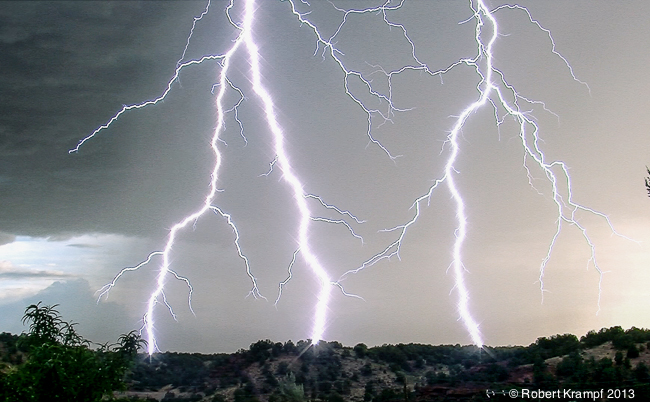
Which of the following is likely a sign that it will rain soon?
-
Rising temperature
No. A warm air mass moving into your area might bring rain, but it also might bring sunny weather. Rising temperature by itself is not a good indicator of rain. -
Decreasing humidity
No. The humidity at ground level does not play much of a role in the formation of rain in the clouds. Just before it rains, the precipitation could cause the humidity to increase, but it would not cause it to decrease. -
Wind out of the west
No. Any weather front moving in from the west could cause winds, even if it was bringing clear, sunny weather. -
Falling barometric pressure
Yes! Low pressure fronts are commonly associated with rain and storms, so falling barometric pressure is a good indicator that rain may be on the way.
Click to see which state standards this question tests, and which of my videos, experiments, and other resources support that topic.
Florida
SC.5.E.7.3 Recognize how air temperature, barometric pressure, humidity, wind speed and direction, and precipitation determine the weather in a particular place and time.
| Nephoscope | video, checked |
| Building a Rain Gauge, part 2 | video, checked |
| Building a Rain Gauge, part 1 | video, checked |
| Pine Cone Weather | text page, free |
| Review Weather-5 | practice |
| Review Weather-4 | practice |
Utah
UT.4.II.3.a Identify and use the tools of a meteorologist (e.g., measure rainfall using rain gauge, measure air pressure using barometer, measure temperature using a thermometer).
| Nephoscope | video, checked |
| Building a Rain Gauge, part 2 | video, checked |
| Building a Rain Gauge, part 1 | video, checked |
| Pine Cone Weather | text page, free |
| Review Weather-4 | practice |
NGSS
3-ESS2-1 Represent data in tables and graphical displays to describe typical weather conditions expected during a particular season.
| Nephoscope | video, checked |
| Pine Cone Weather | text page, free |
| Review Weather-5 | practice |
| Review Weather-6 | practice |
| Review Weather-4 | practice |
| Review Weather-3 | practice |
| Review Space-5 | practice |
| Review Space-8 | practice |
MS-ESS2-5 Collect data to provide evidence for how the motions and complex interactions of air masses results in changes in weather conditions.
| Cloud Types | video |
| Nephoscope | video, checked |
| Cloud Formation, part 1 | video, ClosedCaptions, checked |
| Pine Cone Weather | text page, free |
| Review Weather-1 | practice |
| Review Weather-2 | practice |
| Review Weather-6 | practice |
| Review Weather-4 | practice |
| Review Weather-3 | practice |
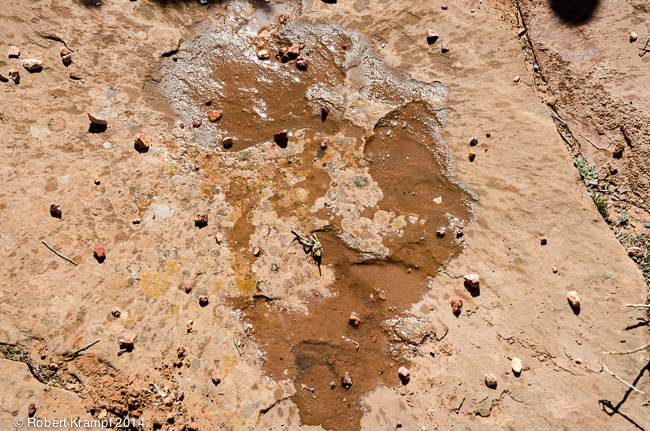
I poured some water on this rock. Later that day, the water was all gone. What happened to it?
-
It evaporated.
Yes. When liquid water turns into water vapor, the process is called evaporation. That is what happened to the water on the rock. -
It sublimated.
No. Sublimation is when a solid turns directly into a gas. Dry ice (frozen carbon dioxide) is an example of sublimation. The solid changes directly into carbon dioxide gas, without becoming a liquid. -
It condensed.
No. Condensation is when a gas turns into a liquid. The drops of water that form on the outside of a glass of ice is the result of condensation. -
It precipitated.
No. In weather, precipitation is when solid or liquid water falls from the clouds. Rain, snow, and sleet are examples of precipitation.
Click to see which state standards this question tests, and which of my videos, experiments, and other resources support that topic.
Florida
SC.3.P.9.1 Describe the changes water undergoes when it changes state through heating and cooling by using familiar scientific terms such as melting, freezing, boiling, evaporation, and condensation.
| Cloud Formation, part 2 | video |
| Making a Solar Still | video |
| Wonderful Water | video, checked |
| A Watched Pot | video |
| Why We Sweat | video, checked |
| Photographing Snowflakes | video, checked |
| Ice Cream Science | video, checked |
| Cloud Formation, part 1 | video, ClosedCaptions, checked |
| The Water Cycle | video, checked |
| A Model of the Water Cycle | video, ClosedCaptions, checked |
| What Really Happens With Evaporation? | text page, free, checked |
| Review Weather-2 | practice |
| Review Weather-10 | practice |
| Review Weather-1 | practice |
SC.5.E.7.1 Create a model to explain the parts of the water cycle. Water can be a gas, a liquid, or a solid and can go back and forth from one state to another.
>>> Teacher Page: Water Cycle
| Cloud Formation, part 2 | video |
| Cloud Types | video |
| Making a Solar Still | video |
| A Watched Pot | video |
| Photographing Snowflakes | video, checked |
| The Water Cycle | video, checked |
| A Model of the Water Cycle | video, ClosedCaptions, checked |
| Review Weather-1 | practice |
| Review Weather-2 | practice |
| Review Weather-8 | practice |
| Review Weather-10 | practice |
Utah
UT.4.I.2.a Locate examples of evaporation and condensation in the water cycle (e.g., water evaporates when heated and clouds or dew forms when vapor is cooled).
| Cloud Types | video |
| Making a Solar Still | video |
| A Watched Pot | video |
| Cloud Formation, part 1 | video, ClosedCaptions, checked |
| The Water Cycle | video, checked |
| A Model of the Water Cycle | video, ClosedCaptions, checked |
| A Cool Experiment | text page |
| Review Weather-1 | practice |
| Review Weather-2 | practice |
NGSS
MS-ESS2-5 Collect data to provide evidence for how the motions and complex interactions of air masses results in changes in weather conditions.
| Cloud Types | video |
| Nephoscope | video, checked |
| Cloud Formation, part 1 | video, ClosedCaptions, checked |
| Pine Cone Weather | text page, free |
| Review Weather-1 | practice |
| Review Weather-2 | practice |
| Review Weather-6 | practice |
| Review Weather-4 | practice |
| Review Weather-3 | practice |
Which of the following forms of ice commonly occurs in the summer when air temperatures are well above freezing?
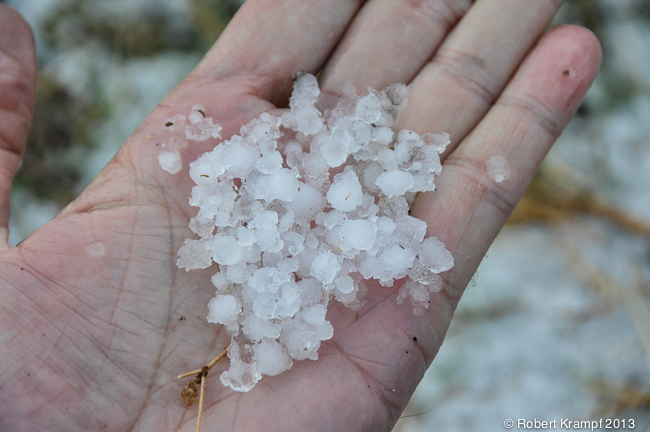
A: Hail
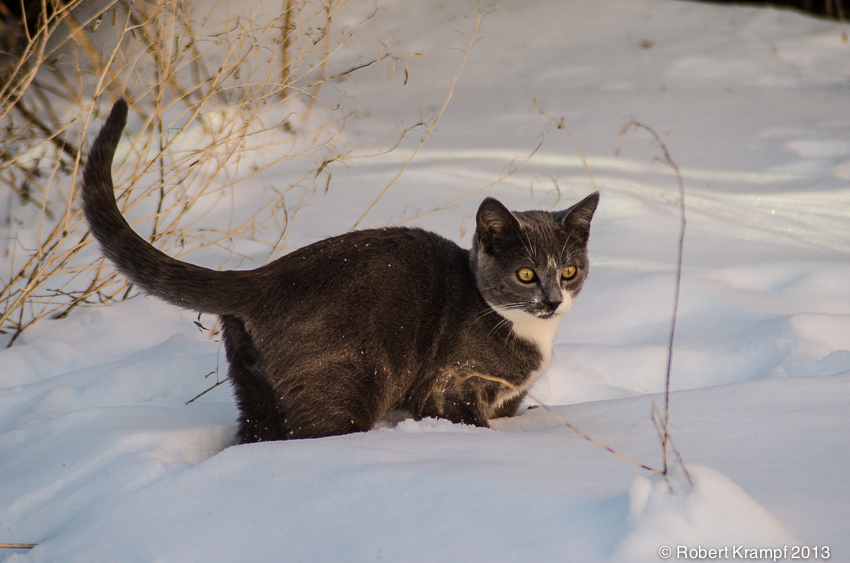
B: Snow
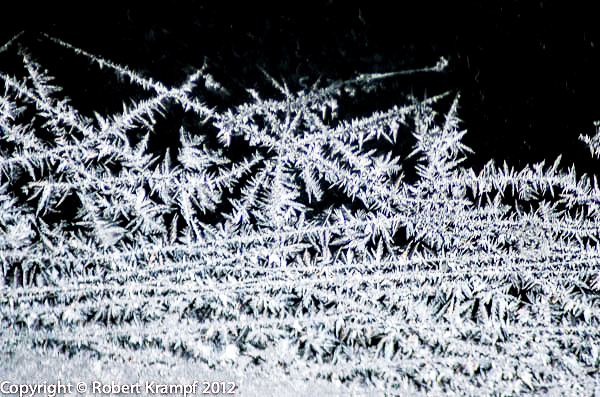
C: Frost
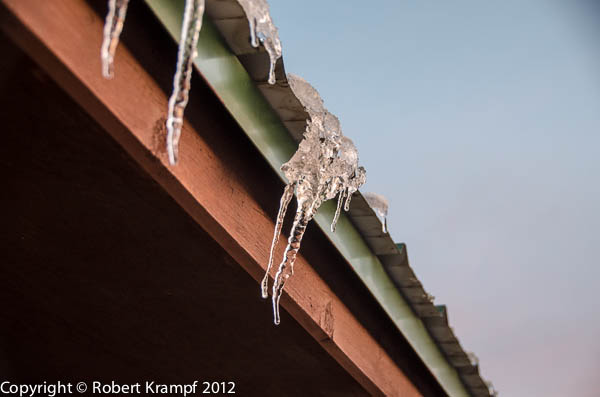
D: Freezing rain
Think about it, and when you think you know the answer, then click here.
While other kinds of frozen precipitation can form at high altitudes, in the summer they usually melt long before they reach the ground. Hail is made up of large enough chunks of ice that it usually remains frozen all the way to the ground, even during warm weather.
Click to see which state standards this question tests, and which of my videos, experiments, and other resources support that topic.
Florida
SC.5.E.7.4 Distinguish among the various forms of precipitation (rain, snow, sleet, and hail), making connections to the weather in a particular place and time.
| Photographing Snowflakes | video, checked |
| Building a Rain Gauge, part 2 | video, checked |
| Building a Rain Gauge, part 1 | video, checked |
| Snow Rollers | text page |
| Review Weather-6 | practice |
| Review Weather-3 | practice |
Utah
UT.4.II.2.a Observe and record effects of air temperature on precipitation (e.g., below freezing results in snow, above freezing results in rain).
| Photographing Snowflakes | video, checked |
| Building a Rain Gauge, part 2 | video, checked |
| Building a Rain Gauge, part 1 | video, checked |
| Review Weather-6 | practice |
| Review Weather-3 | practice |
NGSS
3-ESS2-1 Represent data in tables and graphical displays to describe typical weather conditions expected during a particular season.
| Nephoscope | video, checked |
| Pine Cone Weather | text page, free |
| Review Weather-5 | practice |
| Review Weather-6 | practice |
| Review Weather-4 | practice |
| Review Weather-3 | practice |
| Review Space-5 | practice |
| Review Space-8 | practice |
MS-ESS2-5 Collect data to provide evidence for how the motions and complex interactions of air masses results in changes in weather conditions.
| Cloud Types | video |
| Nephoscope | video, checked |
| Cloud Formation, part 1 | video, ClosedCaptions, checked |
| Pine Cone Weather | text page, free |
| Review Weather-1 | practice |
| Review Weather-2 | practice |
| Review Weather-6 | practice |
| Review Weather-4 | practice |
| Review Weather-3 | practice |
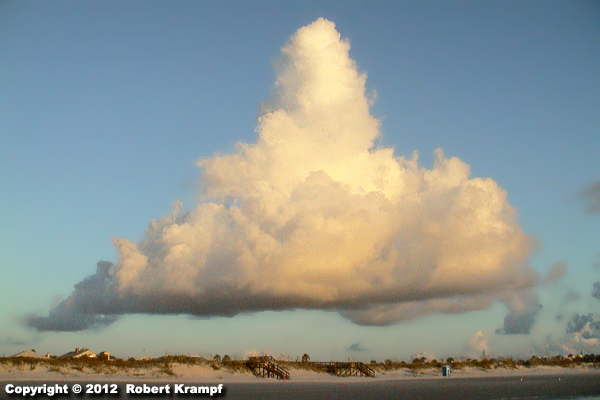
Which of these processes forms the VISIBLE part of a cloud?
-
Evaporation
No. Evaporation changes liquid water into water vapor. Water vapor is an invisible gas, so it is not the visible part of the cloud. -
Condensation
Yes! Condensation changes water vapor into droplets of liquid water to form the cloud. These are just like the tiny water droplets that form fog, letting you see the cloud. -
Precipitation
No. Precipitation can fall from a cloud, but it is not the process that forms the cloud. -
Convection
No. Convection carries the water vapor upwards so it can cool and condense, but condensation is what forms the visible part of the cloud.
Click to see which state standards this question tests, and which of my videos, experiments, and other resources support that topic.
Florida
SC.3.P.9.1 Describe the changes water undergoes when it changes state through heating and cooling by using familiar scientific terms such as melting, freezing, boiling, evaporation, and condensation.
| Cloud Formation, part 2 | video |
| Making a Solar Still | video |
| Wonderful Water | video, checked |
| A Watched Pot | video |
| Why We Sweat | video, checked |
| Photographing Snowflakes | video, checked |
| Ice Cream Science | video, checked |
| Cloud Formation, part 1 | video, ClosedCaptions, checked |
| The Water Cycle | video, checked |
| A Model of the Water Cycle | video, ClosedCaptions, checked |
| What Really Happens With Evaporation? | text page, free, checked |
| Review Weather-2 | practice |
| Review Weather-10 | practice |
| Review Weather-1 | practice |
SC.5.E.7.1 Create a model to explain the parts of the water cycle. Water can be a gas, a liquid, or a solid and can go back and forth from one state to another.
>>> Teacher Page: Water Cycle
| Cloud Formation, part 2 | video |
| Cloud Types | video |
| Making a Solar Still | video |
| A Watched Pot | video |
| Photographing Snowflakes | video, checked |
| The Water Cycle | video, checked |
| A Model of the Water Cycle | video, ClosedCaptions, checked |
| Review Weather-1 | practice |
| Review Weather-2 | practice |
| Review Weather-8 | practice |
| Review Weather-10 | practice |
Utah
UT.4.I.2.a Locate examples of evaporation and condensation in the water cycle (e.g., water evaporates when heated and clouds or dew forms when vapor is cooled).
| Cloud Types | video |
| Making a Solar Still | video |
| A Watched Pot | video |
| Cloud Formation, part 1 | video, ClosedCaptions, checked |
| The Water Cycle | video, checked |
| A Model of the Water Cycle | video, ClosedCaptions, checked |
| A Cool Experiment | text page |
| Review Weather-1 | practice |
| Review Weather-2 | practice |
NGSS
MS-ESS2-5 Collect data to provide evidence for how the motions and complex interactions of air masses results in changes in weather conditions.
| Cloud Types | video |
| Nephoscope | video, checked |
| Cloud Formation, part 1 | video, ClosedCaptions, checked |
| Pine Cone Weather | text page, free |
| Review Weather-1 | practice |
| Review Weather-2 | practice |
| Review Weather-6 | practice |
| Review Weather-4 | practice |
| Review Weather-3 | practice |
The questions are chosen randomly, so this quest will be different each time you reload the page.
Non-subscriber
